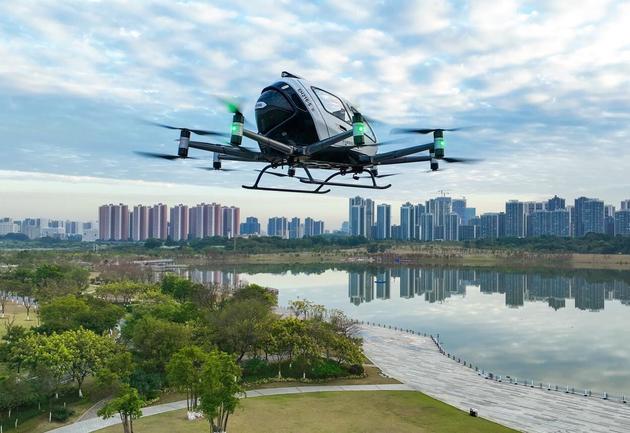
Photo/Provided by Ehang
On April 7, the Civil Aviation Administration of China issued a production certificate for the EHang EH216-S unmanned autonomous passenger aircraft system in Guangzhou.
It becomes the world’s first eVTOL (electric vertical takeoff and landing) aircraft to obtain all three major aviation credentials (The type certificate, Standard Airworthiness Certificate and Production Certificate) for manned flight.
Hu Huazhi, chairman of EHang (NASDAQ: EH), said in an interview with National Business Daily (NBD): "At present, the large-scale commercial operation of Ehang EH216-S "no longer faces major obstacles."
Hu Huazhi drew parallels to the early days of aviation when Boeing and Airbus sold their first airplane tickets. The initial passengers likely felt a mix of excitement and fear. Just as airplanes eventually became a normalized mode of travel, Hu believes the same will happen with eVTOLs as safety records accumulate.
Looking ahead, the next challenges involve establishing standardized operating procedures to safely manage multiple aircraft simultaneously and adapting infrastructure for the disruptive shift in urban transportation. Imagine a future where every residential community has a takeoff and landing point, akin to bus stops, said Hu on the ceremony.
Driven by the thriving low-altitude economy frenzy, demand for the EHang EH216-S remains robust. Since the fourth quarter of last year, EHang has strategically partnered with various local governments, including Shenzhen Bao’an District, Luohu District, Guangzhou Huangpu District, Hefei, Wuxi, and even overseas in the United Arab Emirates. These collaborations have resulted in hundreds of pre-orders for the EH216-S and the establishment of eVTOL operational hubs in multiple locations.
"It takes more than just one or two aircraft to make a low-altitude economy viable. We need a large number of aircraft operating safely and efficiently in a well-managed low-altitude airspace. Only then can we start to see real profits from this new industry. I believe it will take some time to get there, but I'm confident that it will happen," said Hu.
In parallel, several Chinese provinces have begun deploying unmanned aerial vehicles, constructing landing pads, opening flight routes, and pioneering low-altitude economic demonstration scenarios. EHang is also collaborating with the Civil Aviation Administration of China to establish commercial operating standards for manned autonomous aircraft, which is expected to be released in the second quarter of this year.
During an interview with NBD, Luo Liangsheng, Vice Chairman and Secretary-General of the Guangdong UAV Industry Association, highlighted the need to integrate artificial intelligence and aviation safety principles for manned autonomous flights. While technical challenges have been addressed, the high-risk nature of AI-controlled flight necessitates a new management framework and regulations, which will evolve through operational experience.
EHang’s strong performance reflects market enthusiasm. In the fourth quarter of 2023, EH216-S sales surged, with 23 units delivered – the highest quarterly delivery volume in the past three years. Revenues exceeded 56 million yuan, more than triple the previous year.
According to a research report by China International Capital Corporation (CICC), the low-altitude economy is still in its infancy. However, if companies finds viable business models, eVTOL products are poised for accelerated growth. The year 2024 is likely to become a pivotal year for low-altitude economic development.


 川公网安备 51019002001991号
川公网安备 51019002001991号





